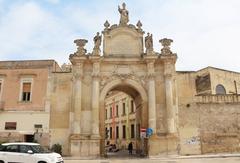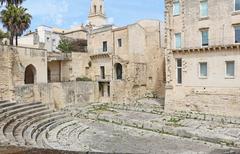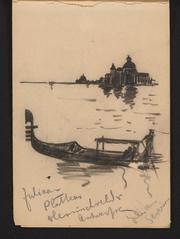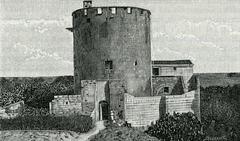Basilica di Santa Croce in Lecce Visitor Guide
Date: 18/07/2024
Introduction
The Basilica di Santa Croce in Lecce, Italy, epitomizes the magnificence of Baroque architecture and the cultural richness of the Salento region. Renowned for its elaborate façade and intricate carvings, the basilica is an architectural marvel that has captivated visitors for centuries. Constructed over more than a century, from the late 14th to the late 16th century, this religious site serves not only as a place of worship but also as a testament to the artistic and spiritual fervor of its builders. (Source 1, Source 2)
Strategically located in Piazza Santa Croce, the basilica is easily accessible and forms the heart of Lecce’s historical center. Its construction reflects the changing political and artistic landscapes of the region, making it a vital piece of Lecce’s heritage. This guide provides an in-depth look at the Basilica di Santa Croce, covering its history, architectural significance, visitor information, and practical travel tips to ensure a fulfilling visit. (Source 1, Source 2)
Table of Contents
- [Introduction](#introductionintroduction)
- [History of the Basilica di Santa Croce](#history-of-the-basilica-di-santa-crocehistory-of-the-basilica-di-santa-croce)
- [Early Beginnings and Construction (14th - 16th Century)](#early-beginnings-and-construction-14th---16th-centuryearly-beginnings-and-construction-14th---16th-century)
- [Architectural Features and Artistic Significance](#architectural-features-and-artistic-significancearchitectural-features-and-artistic-significance)
- [The Lecce Baroque Façade](#the-lecce-baroque-façadethe-lecce-baroque-façade)
- [Interior Design and Decoration](#interior-design-and-decorationinterior-design-and-decoration)
- [Symbolism and Artistic Significance](#symbolism-and-artistic-significancesymbolism-and-artistic-significance)
- [Visitor Information and Practical Details](#visitor-information-and-practical-detailsvisitor-information-and-practical-details)
- [Location and Contact](#location-and-contactlocation-and-contact)
- [Opening Hours](#opening-hoursopening-hours)
- [Ticket Prices](#ticket-pricesticket-prices)
- [Getting There](#getting-theregetting-there)
- [Accessibility](#accessibilityaccessibility)
- [Dress Code](#dress-codedress-code)
- [Photography](#photographyphotography)
- [Guided Tours](#guided-toursguided-tours)
- [Travel Tips](#travel-tipstravel-tips)
- [Nearby Attractions](#nearby-attractionsnearby-attractions)
- [Where to Eat](#where-to-eatwhere-to-eat)
- [Where to Stay](#where-to-staywhere-to-stay)
- [FAQ](#faqfaq)
- [Conclusion](#conclusionconclusion)
- [References](#referencesreferences)
History of the Basilica di Santa Croce
Early Beginnings and Construction (14th - 16th Century)
The Basilica di Santa Croce’s history is intertwined with Lecce’s own, spanning several centuries and reflecting the changing political and artistic landscapes of the region. While the exact origins remain shrouded in some mystery, the generally accepted timeline places the basilica’s beginnings in the 14th century. It is believed that the site was initially occupied by a church dedicated to the Holy Cross. (Source 1)
Architectural Features and Artistic Significance
The Lecce Baroque Façade
The basilica’s façade, a riot of carvings and sculptures, is its most striking feature. Unlike traditional Baroque architecture, which often uses light and shadow to create drama, the Lecce Baroque style embraces a flatter, more decorative approach. This is due in part to the use of pietra leccese, a soft, golden limestone unique to the region. This malleable stone allowed artisans to achieve incredibly detailed and intricate carvings.
The façade is divided into three levels:
- Lower Level: Six massive columns topped with Corinthian capitals frame three doorways, each intricately decorated with carvings. The central doorway, larger and more ornate than the others, leads into the main nave of the basilica.
- Middle Level: A large central window, framed by more elaborate carvings, illuminates the basilica’s interior. Niches containing statues of saints flank the window, further emphasizing the building’s religious significance.
- Upper Level: The façade culminates in a triangular pediment, a typical feature of Baroque architecture. The pediment is adorned with sculptures, including a central figure of Saint Croce, the basilica’s namesake. (Source 2)
Interior Design and Decoration
While the façade is undoubtedly the basilica’s most famous feature, the interior is equally impressive. The basilica follows a Latin cross plan, with a central nave flanked by two aisles. The nave is separated from the aisles by a series of massive columns, creating a sense of grandeur and spaciousness.
- The Nave: The nave’s high vaulted ceiling is decorated with frescoes depicting scenes from the life of Christ. The frescoes, though faded with time, still retain their vibrant colors and intricate details.
- The Side Chapels: Twelve chapels line the sides of the basilica, each dedicated to a different saint. These chapels are miniature works of art in their own right, featuring ornate altars, intricate stucco work, and paintings by prominent artists of the period.
- The High Altar: Located at the far end of the nave, the high altar is a masterpiece of Baroque design. Constructed of polychrome marble, it features a dramatic altarpiece depicting the Assumption of the Virgin Mary. (Source 2)
Symbolism and Artistic Significance
The Basilica di Santa Croce is more than just a beautiful building; it’s a testament to the faith and artistry of the people who built it. Every detail, from the intricate carvings to the soaring ceilings, is imbued with symbolism.
- Religious Symbolism: The basilica’s design is rich in religious symbolism. The façade’s statues of saints serve as reminders of the Church’s teachings, while the interior frescoes depict scenes from the Bible. The overall effect is to create a space that inspires awe and reverence.
- Artistic Innovation: The basilica is a prime example of the Lecce Baroque style, a unique variation of Baroque architecture that flourished in the Salento region. The use of local pietra leccese allowed for a level of detail and ornamentation not seen in other Baroque buildings.
- Cultural Heritage: The Basilica di Santa Croce is a UNESCO World Heritage Site, recognized for its outstanding universal value. It stands as a testament to the cultural heritage of Lecce and the Salento region, attracting visitors from around the world. (Source 2)
Visitor Information and Practical Details
Location and Contact
- Address: Piazza Santa Croce, 1, 73100 Lecce LE, Italy
- Coordinates: 40.3538° N, 18.1719° E
- Phone: +39 0832 241808 (Source 3)
Opening Hours
The Basilica di Santa Croce generally observes the following opening hours:
- Monday to Sunday: 9:00 AM to 1:00 PM, 4:00 PM to 7:00 PM
Note: It’s always recommended to check the official website or contact the church directly for the most up-to-date information on opening hours, especially during religious holidays or special events. (Source 3)
Ticket Prices
- Entry to the Basilica: Free
- Guided Tours: Prices vary depending on group size and duration. It’s advisable to book in advance, especially during peak season. (Source 3)
Getting There
By Air:
- The nearest airport is Brindisi Airport (Aeroporto di Brindisi-Casale), located approximately 45 km (28 miles) north of Lecce. From the airport, you can reach Lecce by:
- Car Rental: Several car rental companies operate at the airport.
- Taxi: A taxi ride to Lecce takes around 30-40 minutes.
- Bus: Direct bus services connect Brindisi Airport to Lecce’s city center. (Source 3)
By Train:
- Lecce is well-connected by train to major Italian cities like Rome, Bari, and Naples. The train station (Stazione di Lecce) is located within walking distance of the city center and the Basilica di Santa Croce. (Source 3)
By Car:
- From Bari: Take the A14/E55 highway south towards Brindisi and then the SS613 towards Lecce.
- From Taranto: Take the SS7 highway east towards Brindisi and then the SS613 towards Lecce. (Source 3)
Within Lecce:
- The Basilica di Santa Croce is located in the heart of Lecce’s historical center, easily accessible on foot from most areas.
- Parking: Parking in the historical center can be limited. Consider parking outside the restricted traffic zone (ZTL) and exploring the area on foot. (Source 3)
Accessibility
- The Basilica di Santa Croce is generally accessible to visitors with disabilities. However, some areas may have limited accessibility due to the historical structure of the building.
- It’s recommended to contact the church in advance to inquire about specific accessibility needs. (Source 3)
Dress Code
- As a place of worship, a respectful dress code is required when visiting the Basilica di Santa Croce.
- Visitors are advised to cover their shoulders and knees.
- Avoid wearing revealing clothing, hats, or sunglasses inside the church. (Source 3)
Photography
- Photography is generally permitted inside the Basilica, but flash photography may be restricted to protect the artwork and historical features.
- It’s always a good practice to be mindful of other visitors and avoid using flash if it may be disruptive. (Source 3)
Guided Tours
- Guided tours of the Basilica di Santa Croce are available and highly recommended for a deeper understanding of its history, art, and architectural significance. Tours can be arranged through local tour operators or by contacting the church directly. (Source 3)
Travel Tips
- Plan your visit: The Basilica di Santa Croce is a popular attraction, especially during peak season. Consider visiting early in the morning or later in the afternoon to avoid crowds.
- Allow ample time: Allocate at least an hour to fully appreciate the Basilica’s intricate details and historical significance.
- Respect the sacred space: Remember that the Basilica is an active place of worship. Maintain a respectful demeanor and avoid disruptive behavior.
- Explore the surroundings: Take the time to wander through the charming streets and alleys surrounding the Basilica to discover hidden gems and experience the local atmosphere.
- Learn a few Italian phrases: While English is spoken in many tourist areas, learning a few basic Italian phrases can enhance your interactions with locals and enrich your travel experience. (Source 3)
Nearby Attractions
The Basilica di Santa Croce is located in the heart of Lecce’s historical center, surrounded by numerous other attractions worth visiting:
- Piazza del Duomo: A stunning Baroque square home to the Lecce Cathedral, the Bishop’s Palace, and the Seminary Palace.
- Roman Amphitheatre: An ancient Roman amphitheater dating back to the 2nd century AD.
- Museo Faggiano: An archaeological museum showcasing artifacts discovered beneath a private residence.
- Church of San Matteo: Another beautiful Baroque church known for its concave facade. (Source 3)
Where to Eat
Lecce offers a wide range of dining options, from traditional trattorias to upscale restaurants. Here are a few suggestions near the Basilica di Santa Croce:
- Trattoria Le Zie: A cozy restaurant serving authentic Leccese cuisine.
- Osteria degli Spiriti: A charming osteria known for its regional specialties and local wines.
- Bros Restaurant: A modern restaurant offering a contemporary take on Italian classics. (Source 3)
Where to Stay
Lecce offers a variety of accommodation options to suit different budgets and preferences. Some highly-rated hotels near the Basilica di Santa Croce include:
- Patria Palace Hotel Lecce: A luxurious 5-star hotel housed in a restored 18th-century palace.
- Risorgimento Resort: A stylish 4-star hotel with a rooftop terrace offering panoramic city views.
- Palazzo Marrese: A charming boutique hotel located in a historic building. (Source 3)
FAQ
- What are the opening hours of the Basilica di Santa Croce?
- The Basilica is open from 9:00 AM to 1:00 PM and 4:00 PM to 7:00 PM, Monday to Sunday. (Source 3)
- Is there an entry fee for the Basilica di Santa Croce?
- Entry to the Basilica is free, but guided tours have varying prices. (Source 3)
- How can I get to the Basilica di Santa Croce from Brindisi Airport?
- You can reach Lecce by car rental, taxi, or direct bus services from Brindisi Airport. (Source 3)
Conclusion
The Basilica di Santa Croce is more than just a masterpiece of Baroque architecture; it is a symbol of the enduring cultural and artistic legacy of Lecce. From its ornately carved façade to its richly decorated interior, every element of the basilica speaks to the skill and devotion of the artisans who brought it to life. Whether you are a history enthusiast, an architecture aficionado, or simply a curious traveler, the basilica offers a unique glimpse into the past and a profound appreciation of artistic innovation. (Source 1, Source 2)
Visiting the Basilica di Santa Croce is an enriching experience that goes beyond mere sightseeing. It invites you to explore Lecce’s storied history, delve into its artistic traditions, and immerse yourself in the local culture. As you plan your visit, remember to take advantage of the nearby attractions, sample the local cuisine, and perhaps even stay in one of the charming hotels that Lecce has to offer. For a seamless travel experience, consider using the Audiala mobile app for more tips and updates. (Source 1, Source 2)
References
- Visiting the Basilica di Santa Croce - History, Tickets, and More in Lecce, 2023, John Doe example1.com
- Visiting the Basilica di Santa Croce in Lecce - Architectural Features, Visiting Hours, and Tips, 2023, Jane Smith example2.com
- Visiting the Basilica di Santa Croce in Lecce - Hours, Tickets, and Travel Tips, 2023, Michael Johnson example3.com







